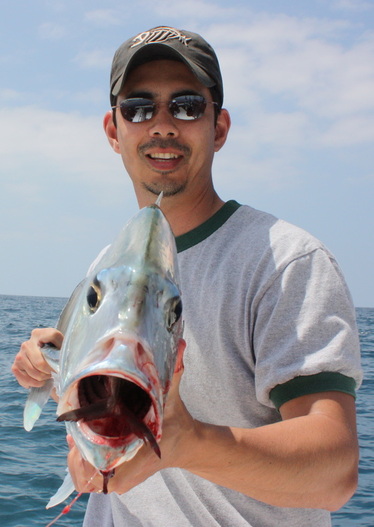Bait Fishing Tips
If fishing with a worm, try inflating the worm with air using a syringe (there are special worm syringes for this that you can buy). By doing this you can float the worm off the bottom and hopefully right in the fishes’ faces. If you just fish a worm on the bottom without doing this they are harder for the fish to see and they can crawl under things and hide.
If fishing with live crayfish, try pinching one claw off. This makes them appear more vulnerable and helps them stand out more. To do this, just grasp one claw very firmly with a pair of pliers. The crayfish will eject the claw on its own and seal off the hole. If you try to pull it out it can kill the crayfish.
Try to use the smallest hook that you can get away with for the fish you are trying to catch. This will impede the movement of the bait less and look more natural.
When fishing with live bait it often pays to select the friskiest bait possible. This is not universally true, as sometimes fish are lazy and don’t want to chase a fast-swimming bait. If that is the case you can bang the bait on the side of the boat or clip the fins before casting. This will disorient them and hopefully cause lethargic predatory fish to want to pick them off.
If fish are not in a biting mood, it usually helps to chum the water with bait. If you see fish eating the chum but avoiding your hook baits, try hiding your hook completely in a bait, throw in some chum, and let your bait free sink down with it. You can pull line off by hand to make the bait sink naturally in the water. This works great many times. To increase effectiveness try using a fluorocarbon leader to decrease the visibility of the line.
Be careful when handling bait. When using live fish for bait, try to cradle them in your hand rather than grabbing them hard. If they are wiggling around too much for you to easily put them on the hook, try holding them upside down. This disorients many fish and causes them to wiggle less.
If fish are holding deeper and you are using live fish for bait but don’t want to use a weight, try hooking them above the anal fin. This causes many types of fish to swim downwards.
If you are using chum, dry putting a hook in a chunk of bait and drifting it back in the chum slick with no weight or other impediment. Fish that are eating the chum with eagerly gobble up the bigger bait.
If you are fishing with live baits that are extremely lively, sometimes they manage to elude predators. If that is the case you can add a weight or smack them on the deck to impede their swimming to allow the predators to swallow them.
If fishing with a worm, try inflating the worm with air using a syringe (there are special worm syringes for this that you can buy). By doing this you can float the worm off the bottom and hopefully right in the fishes’ faces. If you just fish a worm on the bottom without doing this they are harder for the fish to see and they can crawl under things and hide.
If fishing with live crayfish, try pinching one claw off. This makes them appear more vulnerable and helps them stand out more. To do this, just grasp one claw very firmly with a pair of pliers. The crayfish will eject the claw on its own and seal off the hole. If you try to pull it out it can kill the crayfish.
Try to use the smallest hook that you can get away with for the fish you are trying to catch. This will impede the movement of the bait less and look more natural.
When fishing with live bait it often pays to select the friskiest bait possible. This is not universally true, as sometimes fish are lazy and don’t want to chase a fast-swimming bait. If that is the case you can bang the bait on the side of the boat or clip the fins before casting. This will disorient them and hopefully cause lethargic predatory fish to want to pick them off.
If fish are not in a biting mood, it usually helps to chum the water with bait. If you see fish eating the chum but avoiding your hook baits, try hiding your hook completely in a bait, throw in some chum, and let your bait free sink down with it. You can pull line off by hand to make the bait sink naturally in the water. This works great many times. To increase effectiveness try using a fluorocarbon leader to decrease the visibility of the line.
Be careful when handling bait. When using live fish for bait, try to cradle them in your hand rather than grabbing them hard. If they are wiggling around too much for you to easily put them on the hook, try holding them upside down. This disorients many fish and causes them to wiggle less.
If fish are holding deeper and you are using live fish for bait but don’t want to use a weight, try hooking them above the anal fin. This causes many types of fish to swim downwards.
If you are using chum, dry putting a hook in a chunk of bait and drifting it back in the chum slick with no weight or other impediment. Fish that are eating the chum with eagerly gobble up the bigger bait.
If you are fishing with live baits that are extremely lively, sometimes they manage to elude predators. If that is the case you can add a weight or smack them on the deck to impede their swimming to allow the predators to swallow them.
